Things That Shouldn’t - But Still Do - Go Boom!
There are rules about such things … or so we think. After all, apples don’t fall up, lions don’t have feathers, and lakes don’t explode. Oh, but if you happened to be living in Cameroon you’d know all too well that lakes can, and do, explode.

Take for example the Lake Nyos in the Northwest Province of Cameroon. Part of the inactive Okuvolcano chain, it’s an extremely deep, extremely high, and most importantly, very calm , very still, lake. But it hasn’t always been so calm or still. In 1986 something very weird happened to Lake Nyos, a weirdness that unfortunately killed 3,500 head of livestock … and 1,700 people.

No jokes this time. No clumsy '50s horror movie metaphors. What happened to the people in the three
villages near that lake isn’t funny. Most of them luckily died in their sleep, but the 4,000 others who escaped the region suffered from sores,respiratory problems , and even paralysis. All because Lake Nyos exploded.

Limnic Eruption!
Before the why, here’s some more. What happened to the villages of Cha, Nyos, and Subum that time isn’t unique. The same thing happened to Lake Monoun, also in Cameroon, in 1984.

(courtesy of USGS)
That time 37 people died, again not pleasantly. What sounds like a scene from some ugly horror flick is the story of atruck that had been driving near the scene. Mysteriously, the truck’s engine died, and then so did the ten people who got out: suffocating within minutes of stepping down. Only two people of the dozen survived, all because they happened to be sitting on top of the truck.
The technical term for what happened to Lake Nyos and Monoun is a limnic eruption. To get one you need a few basic elements:
- one, a very deep volcanic lake;
- two, said lake has to be over a slow source of volcanic gas;
- and three, it has to be very, very still.
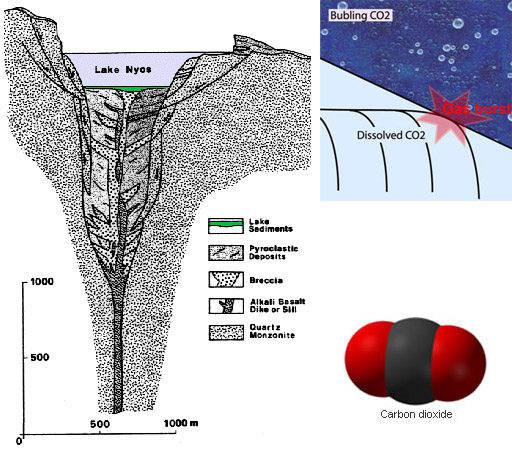
What happens is that volcanic gas, mostly carbon dioxide but nasty carbon monoxide as well, super saturates the lake. A clumsy way of thinking about it is to compare it to a can of soda: shake it up like crazy and the fluid in the can, held back bypressure , doesn’t do anything. But pull the top, or in the case of Nyos and Monoun, deliver a small landslide or low magnitude earthquake, and all that trapped gas rushes out in an immense explosion.
That’s bad enough, as there are even some theories suggesting that the subsequent lake-tsunami from the gassy blast has wiped out still more villages, but what’s worse is that those gasses trapped in the lake water are absolutely deadly.
Heavier than air, the carbon dioxide flows down from the mountain lake, suffocating anything and anyone in its path, even truck engines low to the ground -- which explains how those two lucky passengers managed to escape: they were simply above the toxic cloud.

Fortunately scientists and engineers are working on ways to stop limnic blasts. With controlled taping of the gasses or by bubbling pipes to keep the water from becoming super saturated, it’s beginning to look like they might be able to keep what happened to the 1700 people of Nyos from happening again.
The Brooding Lake:
(in the middle you see the pump that somewhat releases the gas pressure)
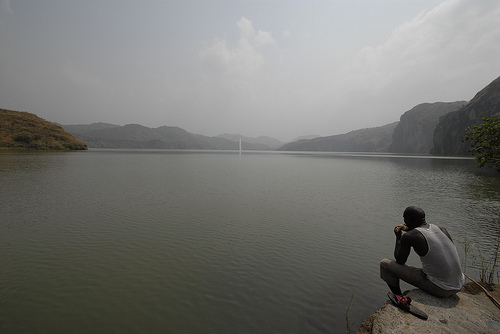
But what keeps other scientists awake at night is that there are more than likely lots of other lakes ready to explode. (for example, Lake Bosumtwi in Ghana "explodes" at irregular intervals
Lake Bosumtwi - a deadly beauty:

According to this source, Lake Kivu in Rwanda also has a serious hazard in the depths of the lake - huge quantities of gas which could lead to a massive eruption:
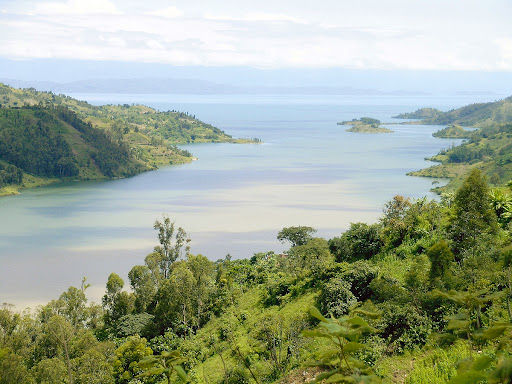
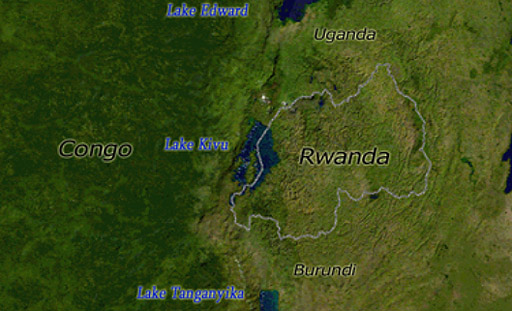
Mystery of the Exploding Frogs
Okay, so lakes can explode. But fruit doesn’t drop to the sky and feline African predators aren’t born with fluffy down, and frogs don’t pop … right?
Not if you happened to live in Germany a few years ago: for a while their toads were doing just that. And we’re not talking a few here and there. More than 1,000 frogs were found burst and blasted in a lake that was soon stuck with the pleasant name “the death pool.”
Theories flew like parts of an exploding frog: a virus? A crazy who had a thing for dynamite and toads? A detonating mass suicide?
The cops checked out the area and the local nut-houses but there wasn’t anyone with that very weird and very specific MO. Scientists checked out the exploded remains but found no suspicious viruses, parasites, or bacteria.
Then one veterinarian came up with the most likely answer: crows.

As anyone who has ever watched a crow knows they do not fit the label “bird brain.” Extremely clever and resourceful, crows are not only fast learners but they study, and learn from, other crows. Frank Mutschmann, one clever vet, had a hypothesis.
Craving the tasty livers of the toads, the crows had learned how to neatly extract them from their prey with a quick stab of their very sharp bills. In response, the toads did what they always do: puffed themselves up. The problem -- for the amphibians that is –- is that because they now had a hole where their livers were, that defense then became an explosive problem. Weasels might not literally go pop in that old kid’s song but that seems to be just what was happening to that lake of German toads in 2005.
But that still doesn’t change the fact that Pippins don’t fall up, and lions don’t have tails like apeacock ’s, right? And what about ants? They don’t explode, do they?
But they do.
Ants that commit explosive suicides
Ladies and gentlemen allow me to present camponotus saundersi. Native to Malaysia, this average looking ant has a unique structure giving it an even more unique behavior when threatened.
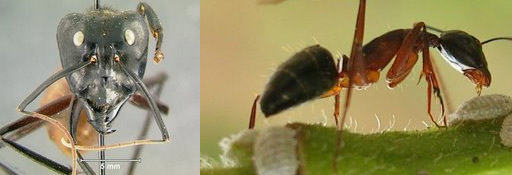
Running the length of its little body are two mandibular glands full of toxins. That’s bad enough, as any critter that decides to try a bite will get a mouthful of foul-tasting, maybe even deadly, venom, but what sets this ant apart from others is what happens when it gets pushed into a corner.
By clamping down on a special set of muscles, these ants can commit violent and, yes, explosive suicide: taking out any nearby threat with a hail of nasty poisons. It’s certainly a dramatic way to go but you can bet that anything or anyone threatening itscolony will get a shock it won’t soon forget.
Exploding lakes, bursting toads, and suicide-bombing ants
Sure, apples don't fall up and lions don’t have feathers – but what with exploding lakes, bursting toads, and suicide-bombing ants, you might want to check that your grandmother’s homemade pie doesn’t float away or that lions aren’t about to swoop down from the sky and carry you off.
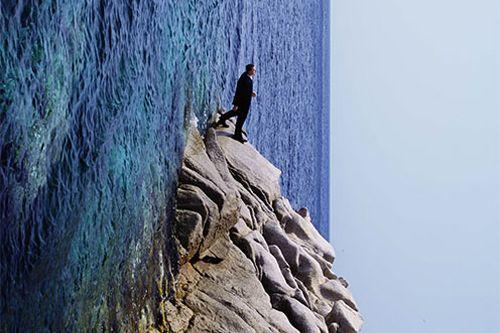
There are rules about such things … or so we think. After all, apples don’t fall up, lions don’t have feathers, and lakes don’t explode. Oh, but if you happened to be living in Cameroon you’d know all too well that lakes can, and do, explode.

Take for example the Lake Nyos in the Northwest Province of Cameroon. Part of the inactive Oku

No jokes this time. No clumsy '50s horror movie metaphors. What happened to the people in the three
villages near that lake isn’t funny. Most of them luckily died in their sleep, but the 4,000 others who escaped the region suffered from sores,

Limnic Eruption!
Before the why, here’s some more. What happened to the villages of Cha, Nyos, and Subum that time isn’t unique. The same thing happened to Lake Monoun, also in Cameroon, in 1984.

(courtesy of USGS)
That time 37 people died, again not pleasantly. What sounds like a scene from some ugly horror flick is the story of a
The technical term for what happened to Lake Nyos and Monoun is a limnic eruption. To get one you need a few basic elements:
- one, a very deep volcanic lake;
- two, said lake has to be over a slow source of volcanic gas;
- and three, it has to be very, very still.

What happens is that volcanic gas, mostly carbon dioxide but nasty carbon monoxide as well, super saturates the lake. A clumsy way of thinking about it is to compare it to a can of soda: shake it up like crazy and the fluid in the can, held back by
That’s bad enough, as there are even some theories suggesting that the subsequent lake-tsunami from the gassy blast has wiped out still more villages, but what’s worse is that those gasses trapped in the lake water are absolutely deadly.

Fortunately scientists and engineers are working on ways to stop limnic blasts. With controlled taping of the gasses or by bubbling pipes to keep the water from becoming super saturated, it’s beginning to look like they might be able to keep what happened to the 1700 people of Nyos from happening again.
The Brooding Lake:
(in the middle you see the pump that somewhat releases the gas pressure)

But what keeps other scientists awake at night is that there are more than likely lots of other lakes ready to explode. (for example, Lake Bosumtwi in Ghana "explodes" at irregular intervals
Lake Bosumtwi - a deadly beauty:

According to this source, Lake Kivu in Rwanda also has a serious hazard in the depths of the lake - huge quantities of gas which could lead to a massive eruption:


Mystery of the Exploding Frogs
Okay, so lakes can explode. But fruit doesn’t drop to the sky and feline African predators aren’t born with fluffy down, and frogs don’t pop … right?
Not if you happened to live in Germany a few years ago: for a while their toads were doing just that. And we’re not talking a few here and there. More than 1,000 frogs were found burst and blasted in a lake that was soon stuck with the pleasant name “the death pool.”
Theories flew like parts of an exploding frog: a virus? A crazy who had a thing for dynamite and toads? A detonating mass suicide?
The cops checked out the area and the local nut-houses but there wasn’t anyone with that very weird and very specific MO. Scientists checked out the exploded remains but found no suspicious viruses, parasites, or bacteria.
Then one veterinarian came up with the most likely answer: crows.

As anyone who has ever watched a crow knows they do not fit the label “bird brain.” Extremely clever and resourceful, crows are not only fast learners but they study, and learn from, other crows. Frank Mutschmann, one clever vet, had a hypothesis.
Craving the tasty livers of the toads, the crows had learned how to neatly extract them from their prey with a quick stab of their very sharp bills. In response, the toads did what they always do: puffed themselves up. The problem -- for the amphibians that is –- is that because they now had a hole where their livers were, that defense then became an explosive problem. Weasels might not literally go pop in that old kid’s song but that seems to be just what was happening to that lake of German toads in 2005.
But that still doesn’t change the fact that Pippins don’t fall up, and lions don’t have tails like a
But they do.
Ants that commit explosive suicides
Ladies and gentlemen allow me to present camponotus saundersi. Native to Malaysia, this average looking ant has a unique structure giving it an even more unique behavior when threatened.

Running the length of its little body are two mandibular glands full of toxins. That’s bad enough, as any critter that decides to try a bite will get a mouthful of foul-tasting, maybe even deadly, venom, but what sets this ant apart from others is what happens when it gets pushed into a corner.
By clamping down on a special set of muscles, these ants can commit violent and, yes, explosive suicide: taking out any nearby threat with a hail of nasty poisons. It’s certainly a dramatic way to go but you can bet that anything or anyone threatening its
Exploding lakes, bursting toads, and suicide-bombing ants
Sure, apples don't fall up and lions don’t have feathers – but what with exploding lakes, bursting toads, and suicide-bombing ants, you might want to check that your grandmother’s homemade pie doesn’t float away or that lions aren’t about to swoop down from the sky and carry you off.

0 comments:
Post a Comment